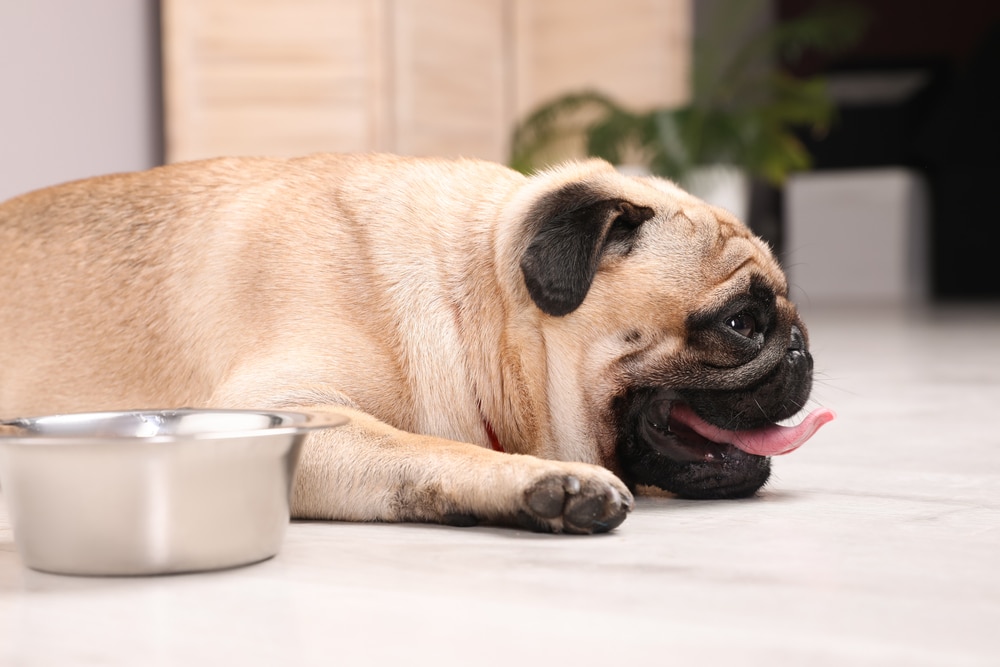It is commonly known that dogs, unlike humans, are not able to sweat because their body does not have enough sweat glands. This is why you may notice your dog panting a lot, especially on hot summer days. Don’t worry, though. Everything is normal. This is just a way for your dog’s body to regulate its temperature. But that doesn’t mean dogs can’t get heatstroke, so it’s important to know what to look for. With that in mind, what are the signs of heatstroke in dogs?
The signs of heatstroke in dogs are rabid breathing, excessive drooling, abnormally hot skin, red membranes, dry mouth and nose, and excessive panting, among others. If you notice any of these signs, remove your dog from the heated area and contact your vet right away.
Table of Contents
What Is Heatstroke And How Does It Happen In Dogs?
Dogs are warm-blooded animals, unlike reptiles, so they can regulate their body temperature through different means. For example, they pant. Panting is when your dog takes small breaths and inhales and exhales very fast, moving air in and out of the lungs.
Heatstroke is a word used to describe hyperthermia or elevated body temperature. The normal body temperature for dogs is 103℉ or 39.4℃. Everything above this is considered to be hyperthermia. If your dog gets a temperature around 106℉ or above, which is 41℃, it may suffer from a heatstroke. Even higher temperatures could cause multiple organs to start to fail, which could be deadly for your furry friend.
The most common way for a dog to get heatstroke is when the owner forgets their dog in a hot car on a summer day, without any ventilation, or when they leave their dog on a hot summer day outside without proper shade and water. This is especially important to stay mindful of if you are the lucky owner of a dog that has a double thick coat, like a Samoyed, or a dog that is a brachycephalic breed, like a Pug.
What Are The Symptoms Of Dogs With Heatstroke?

As mentioned above, heatstroke is a life-threatening condition, and it could potentially end your dog’s life. That means owners should be wary of the early signs of heatstroke their dogs may start to show because a quick reaction could be the difference between life and death.
Here is a list of the most common early signs of heatstroke:
- Rapid breathing
- Excessive drooling
- Abnormally hot skin to the touch
- Red membranes
- Dry mouth and nose
- Excessive panting
At this point, the owner should start to react because if left untreated, the condition will get worse. The clinical signs that the dog shows at a later stage are:
- Mucus turns pale, while the gums may be bluish
- Blood pressure drops due to an even more increased heart rate
- Hyperventilation
- Severe dehydration
- Lethargy and unwillingness to get up
If the owner doesn’t react in time, the dog may collapse and go into a coma from which it may not recover.
What To Do If You Think Your Dog Is Having A Heatstroke?
The first thing to do is to take the dog away from any exposure to heat. Take to a cool, shaded area, for example. Then you should try and lower its temperature by pouring cool, not cold, water, especially on its tummy. If you happen to have a thermometer, place it in the dog’s rectum to take its temperature and have your vet on the phone.
If the temperature is not dropping or it is dropping too fast, you should immediately go to the vet. The vet will give your dog some fluids to manage the dehydration and try to regulate its temperature.
Is Heatstroke Preventable?
Of course, it is! And it’s very easy to do it! Whenever you take your dog with you during the summer, please do not leave it in a hot car without the air conditioning on. Or if you have your dog outside during the day, make sure it has a nice cool shaded area where it can rest. Also, make sure it has access to fresh and cool water. Plus, it’s best to check on it from time to time.
Conclusion: Signs Of Heatstroke In Dogs
Keeping your dog safe from something that can be prevented is always a smart thing for every owner, especially because situations like these can turn fatal. If you have breeds that are more prone to heatstrokes, like the Samoyed, Siberian Husky, brachycephalic breeds, or black dogs in general, please take extra care to make sure they are safe.
So, what do you plan to do to help your dog avoid heatstroke? Let us know in the comments below!
